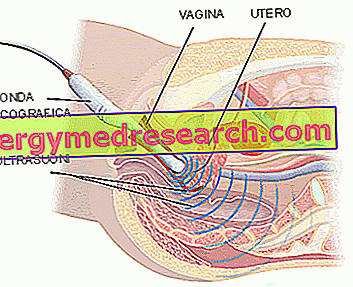Watch the video
X Watch the video on youtubeWhat is Ennicomycosis
Nail fungus - also known as "onychomycosis" - is a very common type of nail disease. In fact, among all the diseases attributable to nails, experts estimate that mycoses occur with an incidence that varies from 30 to 50%.

The nail fungus usually begins with a change in the color of the nail itself and - if the fungus is not timely diagnosed and treated - it can lead to the onset of various complications.
For this reason, as soon as you notice chromatic alterations of the nail, it would be good to contact the doctor immediately. In fact, the longer you delay, the more you run the risk of damaging it permanently.
Incidence
Nail fungus, as mentioned, are very common disorders that can affect both female and male sex patients, belonging to any ethnic group.
The statistics, however, indicate that males are more affected by mycoses than the weaker sex (in this case, the definition of "strong sex", embodied by women, can be risked).
Onychomycoses can affect both fingernails and toenails; however, infections tend to develop preferentially in the latter, due to the greater humidity usually present in this area of the body.
Causes
Naturally, the cause of onychomycosis is represented by a fungal infection that develops on the nails, attacking them and altering them deeply.
In detail, onychomycoses are frequently determined by dermatophytes, ie fungi that - in normal conditions - live in contact with the skin and nails of the individual without creating any kind of problem. However, in some situations - such as, for example, in the event of a decline in the patient's immune defenses - these dermatophytes can begin to replicate uncontrollably giving rise to real infections.
In detail, dermatophytes reproduce in hot and humid places and this is why, usually, the toenails are affected by this disorder. The feet, in fact, exposed to the heat and humidity that are generated by wearing shoes and socks, record a sweating considerably more consistent than the hands. To all this is added a weakening of the immune system: in the feet the blood circulation directed towards the nails is more difficult than that directed to the nails of the hands, consequently the immune defenses of the body are weaker in the feet.
However, in addition to dermatophytes, yeasts and molds can also cause these types of infections.
In this regard, among the main culprits of onychomycosis, we find microorganisms belonging to the genera: Candida, Trichophyton, Epidermophyton and Aspergillus .
Risk factors
As mentioned, damp places represent an excellent breeding ground for fungi: these fungi live in public locker rooms, in swimming pools and showers, and can infect nails by penetrating the space between the nail bed and the nail. Attending these places without the use of footwear, therefore barefoot, is one of the main risk factors for the development of onychomycosis.
Other risk factors - both physiological and pathological - for the development of nail fungus are:
- Diabetes. Diabetic patients, in fact, are particularly predisposed to the development of these infections.
- Old age. Even the elderly - due to a reduction in immune defenses and reduced microcirculation - are more affected by onychomycosis than young individuals.
- Athlete's foot. It is a contagious disorder caused by a very common fungus among athletes.
- Psoriasis.
- (Incorrect) habit of using tight socks and shoes that prevent perspiration.
- Excessive sweating.
- Immune system disorders.
Symptoms and Complications
To learn more: Onychomycosis symptoms
The main and first symptom of onychomycosis is the chromatic alteration of the nail affected by the infection.
In fact, the nail affected by mycosis, in particular at its extremity, tends to change its color, generally fading from white to yellow: the nail can sometimes have spots of different colors, such as brown, green and even black .

In addition to undergoing an alteration of its natural color, the nail surface appears more fragile, friable, deformed and thick.
Mycosis, progressing, could create a bad smell, induce the crumbling of the nail or even cause the onycholysis (ie the detachment, therefore the loss, of the nail).
Furthermore, in the most serious cases, the onychomycosis may become more complicated and worse, also affecting the skin of the foot (or hand), to extend to other areas of the body.
In diabetic subjects, nail fungus infections are very dangerous: nerve endings and blood circulation can be compromised, so that even an infection by bacteria can cause serious consequences.
Treatment
To learn more: Drugs against omnicomosis
Onychomycoses are not easy to eradicate: they do not heal unless action is taken with appropriate drugs (antifungals). Moreover, they are very contagious.
From here, it is easy to see how the best cure is prevention: hand and foot hygiene, combined with small details, can certainly be beneficial to nail health.
Nails should always be clean and dry. In this regard, it would be advisable to avoid the use of synthetic fabric stockings that do not let your feet breathe.
The nails must never be torn, but cut carefully: if this were not the case, access to bacteria and other micro-organisms such as mycetes would be facilitated.

In this case, the intervention must be immediate: the doctor, the podiatrist or a specialist should advise the most appropriate pharmacological treatment for the subject, such as topical antifungal drugs (enamels or ointments) or systemic (oral drugs) ).
These medicines act on the fungus, eradicating it, and favor the development of a new and uninfected nail. Unfortunately, the pharmacological treatment of mycosis of nails is very long, since the nail takes from 9 months to a year to grow completely.
Only in very serious cases, the expert could recommend the removal of the nail by surgical intervention.
Natural remedies
Natural remedies are not lacking to prevent and combat nail fungus.
Against onychomycosis, phytotherapy comes in handy with plants with an immunostimulant action, among which the most well-known and used is undoubtedly echinacea. Walnut is also useful for the properties of juglone, a substance capable of inhibiting fungal growth and having antibacterial properties.
To learn more: Remedies against omnicomosis
Summary
To fix the concepts ...
| CAUSE | SYMPTOM | PREVENTION | CARE |
| Infection with fungus, yeast or mold | Yellow or whitish, thick, fragile nail that tends to break, smelly, deformed, painful. | Hand and foot nail hygiene; short, clean and dry nails; do not walk barefoot in public or damp places; avoid synthetic stockings; do not tear your nails. | Antifungal drugs with topical or systemic action. Surgical removal (in the most serious case) |



